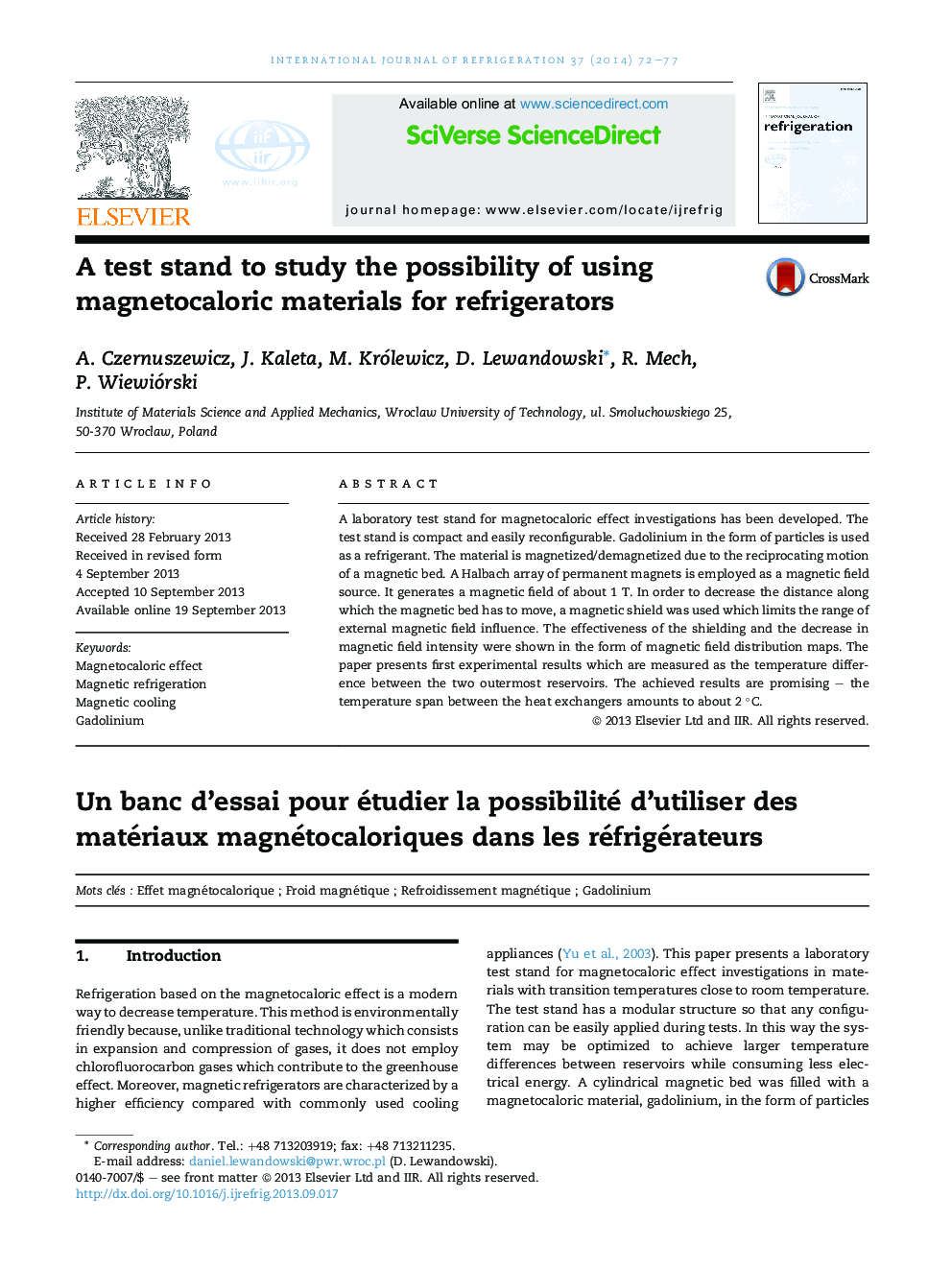| Article ID | Journal | Published Year | Pages | File Type |
|---|---|---|---|---|
| 790222 | International Journal of Refrigeration | 2014 | 6 Pages |
•A test stand to investigate the magnetocaloric effect was built based on AMR cycle.•The system utilizes gadolinium, in the form of particles, as refrigerant.•1 T cylindrical Halbach array is used as magnetic field source.•A temperature span of 1.6 °C is achieved for a working temperature of 298 K.•Improvements are necessary to reduce heat losses and increase the temperature span.
A laboratory test stand for magnetocaloric effect investigations has been developed. The test stand is compact and easily reconfigurable. Gadolinium in the form of particles is used as a refrigerant. The material is magnetized/demagnetized due to the reciprocating motion of a magnetic bed. A Halbach array of permanent magnets is employed as a magnetic field source. It generates a magnetic field of about 1 T. In order to decrease the distance along which the magnetic bed has to move, a magnetic shield was used which limits the range of external magnetic field influence. The effectiveness of the shielding and the decrease in magnetic field intensity were shown in the form of magnetic field distribution maps. The paper presents first experimental results which are measured as the temperature difference between the two outermost reservoirs. The achieved results are promising – the temperature span between the heat exchangers amounts to about 2 °C.
